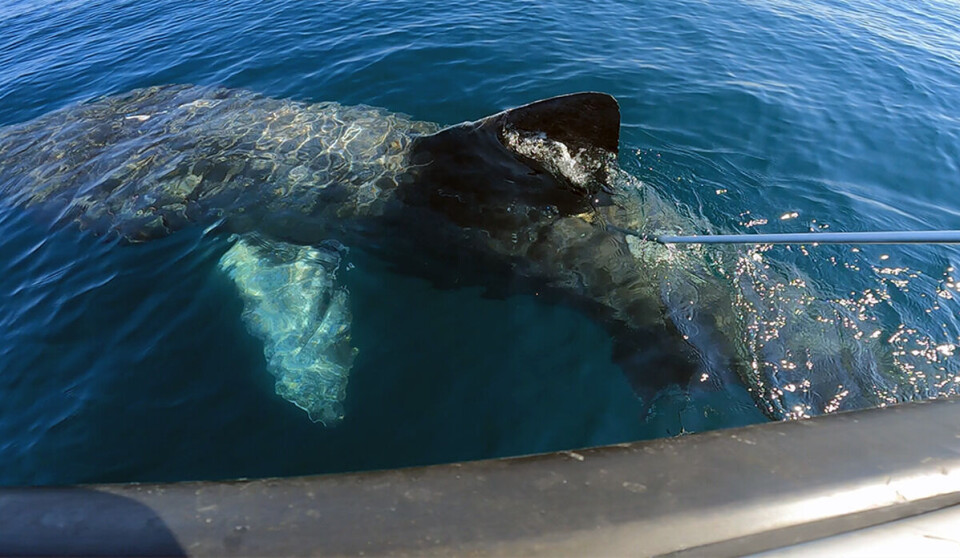THIS ARTICLE/PRESS RELEASE IS PAID FOR AND PRESENTED BY the Institute of Marine Research - read more

'Shark hotline' – if you spot a shark along the Norwegian coast, call this number
The Institute of Marine Research is launching their own ‘shark hotline’, and are particularly interested in sightings of basking sharks and porbeagles.
The number of the hotline is +47 55 23 85 60.
The Institute of Marine Research (IMR) hotline will help to ensure that marine scientists are informed quickly when someone sees a basking shark or porbeagle in Norwegian waters.
The 'shark team' will then spring into action.
“This summer we will be putting satellite tags on basking sharks. Last year we managed to tag three of them. This year we are hoping to tag even more,” Keno Ferter says. He is a tagging expert at IMR.
When spring arrives, the fins of basking sharks appear near the coast, as they gorge on plankton.
But the Norwegian coast is incredibly long, so marine scientists are totally dependent on help from the general public.
“We ask people to let us know as soon as they spot a basking shark. If we get there quickly, there’s a much higher chance of being able to tag it,” Ferter says.
Satellite tagging helps researchers find out where sharks migrate and spend time over the course of the year.
Over 300 observations
Over the past four years, keen shark spotters have reported over 300 observations of basking sharks.
The area where most sharks have been seen is on the stretch of coast from Møre og Romsdal to Nordland, especially in the area around the Lofoten archipelago.
In the past, observations have been recorded through the Marine Citizen Science portal Dugnad for Havet, as well as by people emailing and phoning individual scientists.
This year, the hope is that people will phone directly from their boats or the shore – while the shark fin is still visible in the water.
“We hope that the shark hotline will ring off the hook this summer. By calling us, you play a vital role in enabling us to tag sharks,” Ferter says.
IMR's tagging team will be in the area off the Lofoten and Vesterålen islands from mid-June onwards, but they are flexible if there are sightings in other parts of the country. Particularly in the areas north and south of Lofoten.
Below you can see what a basking shark may look like from the surface of the water:
Not dangerous
At up to 12 metres long, the basking shark is the biggest shark to visit Norwegian territorial waters. In the summer months, it can often be seen at the surface close to land.
It is generally observed near the surface with its mouth open – up to a metre wide. This is to filter the sea water for zooplankton, which is the main item on the menu.
The satellite tags that were attached to three basking sharks last year should detach themselves at the start of July.
“We hope they will tell us where the basking shark migrates and spends time. That increases the chance of us managing to tag more sharks, so we can follow them and learn more about them,” Claudia Junge says.
She is the shark scientist managing this project.

This article/press release is paid for and presented by the Institute of Marine Research
This content is created by the Institute of Marine Research's communication staff, who use this platform to communicate science and share results from research with the public. The Institute of Marine Research is one of more than 80 owners of ScienceNorway.no. Read more here.
See more content from the Institute of Marine Research:
-
These whales have summer jobs as ocean fertilisers
-
Have researchers found the world’s first bamboo coral reef?
-
Herring suffered collective memory loss and forgot about their spawning ground
-
Researchers found 1,580 different bacteria in Bergen's sewage. They are all resistant to antibiotics
-
For the first time, marine researchers have remotely controlled an unmanned vessel from the control room in Bergen
-
New discovery: Cod can adjust to climate change – from one generation to the next









































